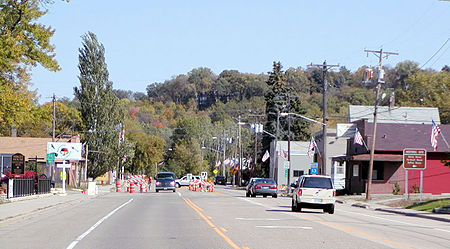Mendota, Minnesota
Cities in Dakota County, MinnesotaCities in MinnesotaDakota toponymsHistoric districts on the National Register of Historic Places in MinnesotaMendota, Minnesota ... and 4 more
Minneapolis–Saint PaulMinnesota populated places on the Mississippi RiverNRHP infobox with nocatNational Register of Historic Places in Dakota County, Minnesota

Mendota is a city in Dakota County, Minnesota, United States. The name is derived from the Dakota language, meaning "mouth or junction of one river with another. The population was 198 at the 2010 census.
Excerpt from the Wikipedia article Mendota, Minnesota (License: CC BY-SA 3.0, Authors, Images).Mendota, Minnesota
Sibley Memorial Highway,
Geographical coordinates (GPS) Address Nearby Places Show on map
Geographical coordinates (GPS)
| Latitude | Longitude |
|---|---|
| N 44.887222222222 ° | E -93.164444444444 ° |
Address
Sibley Memorial Highway 1362
55150
Minnesota, United States
Open on Google Maps








